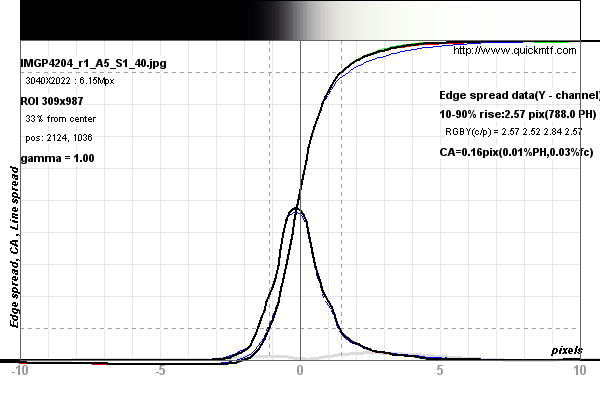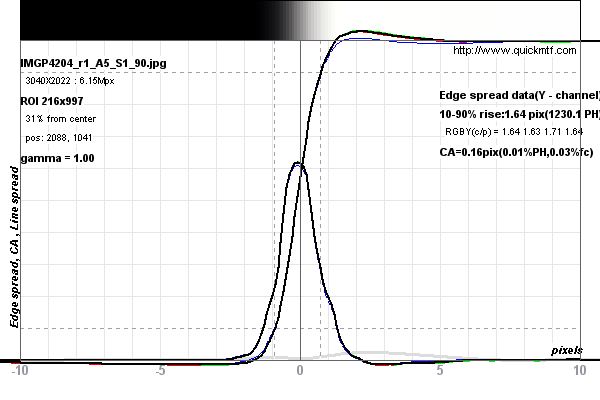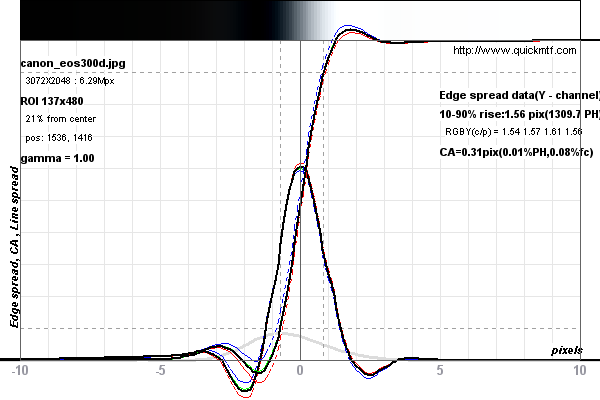Sharpening of digital images is made necessary by two things that degrade the image:
- the anti-alias filter, to prevent aliasing it filters out high frequency information, but that degrades the image sharpness.
- the Bayer matrix, this is a scheme to recover pixel level colours from a 3x3 matrix which also degrades image sharpness.
This degrading of image sharpness is quite significant so it is normal to try to reverse the degradation somewhat by applying sharpening. And herein lies the problem. The precise amount (and manner) of sharpening is a subjective process and when too much is applied the image acquires an artificial look with thin white/black/grey lines or halos around edges.
A good way to see this is to use a tool like QuickMTF to analyse the edge sharpness of a five degree slanted edge.
The first image below shows the edge sharpness of an image with very little sharpening applied. Here the edge blur is 2.57 pixel.
The second image has moderate sharpening applied and the edge blur has decreased to a very respectable value of 1.64 pixel. Now the shape of the curve indicates very little 'ringing' which means there will be no sharpening artifacts visible.
The third image has had excessive sharpening applied which has reduced the edge blur to 1.56 pixel. You will see considerable 'ringing' in the graph indicating the over sharpening. So while the image is sharper there will be visible sharpening artifacts.
How much sharpening you want must be balanced with how much artifacts you are prepared to tolerate and this is your subjective choice.
Image 1, very slight sharpening. Edge blur = 2.57 pixel.

Image 2, moderate sharpening. Edge blur = 1,64 pixel.

Image 3, over sharpening. Edge blur = 1.56 pixel.

